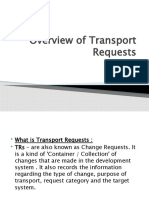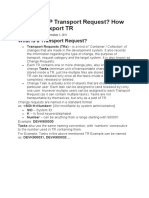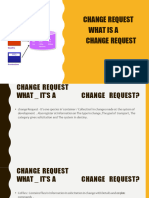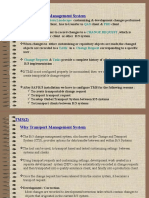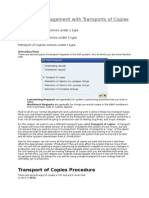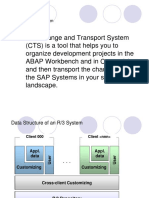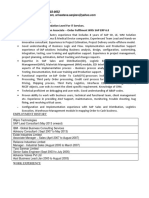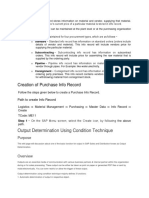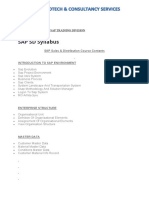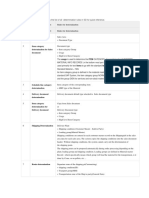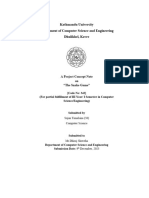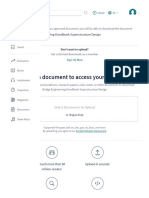0% found this document useful (0 votes)
60 views6 pagesSAP Transport Requests Guide
Transport requests (TRs) contain change tasks that modify objects in the development system. Each TR can have multiple change tasks assigned to different users, but a single user is assigned to each task. The project manager creates the TR and assigns tasks to project members. When all tasks are complete, the manager can release the full TR to the target system.
Uploaded by
supriyaCopyright
© © All Rights Reserved
We take content rights seriously. If you suspect this is your content, claim it here.
Available Formats
Download as DOCX, PDF, TXT or read online on Scribd
0% found this document useful (0 votes)
60 views6 pagesSAP Transport Requests Guide
Transport requests (TRs) contain change tasks that modify objects in the development system. Each TR can have multiple change tasks assigned to different users, but a single user is assigned to each task. The project manager creates the TR and assigns tasks to project members. When all tasks are complete, the manager can release the full TR to the target system.
Uploaded by
supriyaCopyright
© © All Rights Reserved
We take content rights seriously. If you suspect this is your content, claim it here.
Available Formats
Download as DOCX, PDF, TXT or read online on Scribd
/ 6
